Stainless steel in kitchens
Stainless steel is very also popular in kitchens due to its functionality, (it is hygienic and easily cleaned), and the silky luster which reflects light and keeps a kitchen bright. It can be used on all work surfaces, doors and shelves, cabinet cladding and breakfast bar tops. Put two intersecting stainless steel surfaces together and light will seem to reflect around the space. Coloured and/ or textures sheets work especially well as a featured splash back wall. A variety of appliances (fridges, cook-tops, ovens) are also available in stainless steel.
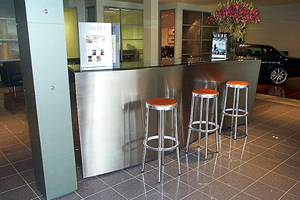 |
 |
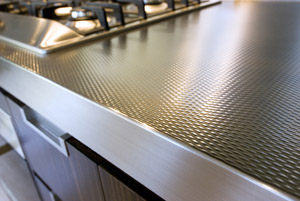 |
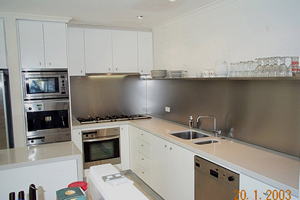 |
Examples of stainless steel being used in kitchens
Stainless steel doors, gates and fencing
Cladding doors with stainless steel not only improves strength for security but provides doors with a strong, cool, slick look. Patterned sheets work particularly well, especially with smooth stainless steel door fittings. It can also be used to clad planter boxes. Stainless steel is an excellent material for pool fencing. While more expensive than other materials, it has incomparable durability and is virtually maintenance free.
Stainless steel in bathrooms and sanitary areas
Stainless steel can be used in troughs, pans, sinks, mirror framing, towel rails, soap holders. They are even available as tiles which impart a bathroom with a clean, modern, hi tech feel. (See www.alloydesign.com.au)
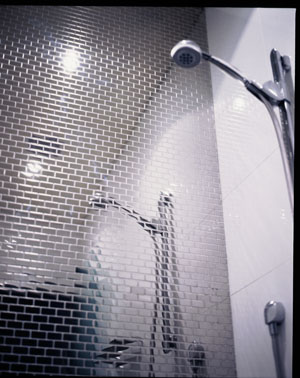 |
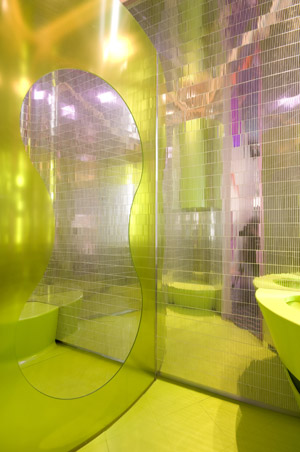 |
Examples of stainless steel being used in bathrooms
Termite control using stainless steel
TEMIMESH is a stainless steel mesh that is an environmentally friendly, highly effective and durable barrier against termites. It works like an insect screen. The mesh barrier is installed during construction across potential termite entry points such as between flashing and slab. (See www.termi-mesh.com).
Environmental Qualities of Stainless Steel
Stainless contains no harmful additives and is one of the most recyclable building materials. Steel makers use 50-80% of used scrap material in their manufacture of new stainless steel. If it does find its way into landfill, it has no affect on soil or water and will in time break down.
Maintenance of Stainless Steel
Stainless steel is durable and requires a minimum of maintenance, outlasting many competing products. While the name is derived from the fact that it resists stains or corrosion much more than normal steel, it is however over time not completely stain proof. To keep its perfect luster any salt residue should be washed off. It can also be protected with a specialty repellent such as Hillmark's STEEL KLEEN. Grease can be readily removed with a soft cloth dampened with a household grease removal solution, or a few drops of a soft cream cleanser (e.g., JIF or GUMPTION). It should be wiped off with another clean damp soft cloth or paper towel. There are also specialty power cleaners available such as Hillmark's STEEL POWER. Wiping should always be done in a circular motion or in the direction of the grain. Abrasive cleaners like SCOTCHBRITE should never be used. With its variety of different finishes, stainless steel can be used as principle cladding, as a feature and decorative surface , or as an interesting punctuation for other materials.
The secret of its effective use in residential situations is to contrast the coolness and luster of stainless steel with the warmth of colour or texture from proximate surfaces.
For more information, examples of fabrication and a list of fabricators, see the Stainless Steel Development Association website.
<< Previous page
